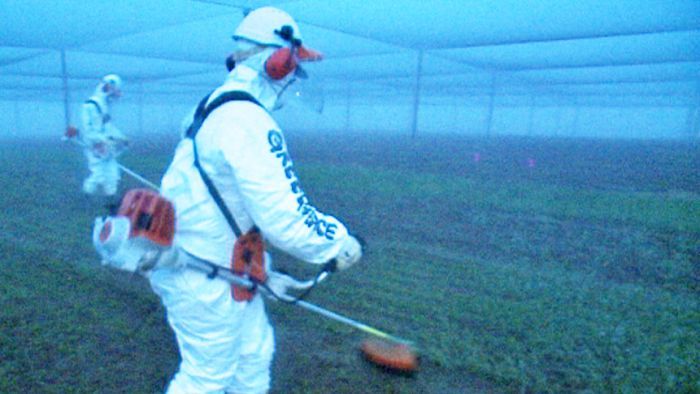Greenpeace forced to pay over $250,000
Greenpeace was founded in Canada in 1971, with an objective of using science to support and advance environmental causes and policies. Greenpeace Canada states their value is to use “non-violent creative action to pave the way towards a greener, more peaceful world, and to confront the systems that threaten our environment”. While this is a laudable objective, it certainly isn’t a value shared by all of Greenpeace’s activists.
Many current environmental organizations have intentionally rejected the science supporting the environmental benefits of genetic modification (GM) crops, perhaps because it conflicts with their ability to mislead the public for fundraising purposes, or maybe they just can’t accept the fact that industry is doing something beneficial. It’s this rejection of GM crops however, that has resulted in environmental activists engaging in numerous incidents in multiple countries, where crop field trials have been destroyed. One such incident occurred in Australia in 2011.
Like most countries, Australia publicly funds a wide spectrum of research activities, including new crop varieties, which is done through the Commonwealth Scientific and Industrial Research Organisation (CSIRO). Part of CSIRO’s agricultural research involves new scientific technologies to develop new crop varieties that will be able to be yield sustaining through a changing climate. One of these research efforts involved using genetic modification to develop a potential variety of wheat. This GM wheat trial variety was grown at one of CSIRO’s research stations in Australia.
Knowing the location of the trial GM wheat, on 14 July 2011 two employees from Greenpeace Australia illegally trespassed on CSIRO property and using a whipper snipper, physically destroyed research plots. Greenpeace Australia proudly claimed responsibility for this act of violence, as “[l]ater that day, Greenpeace released a statement on its official website about the removal of what it called the ‘controversial crop’…”. So much for Greenpeace’s claim to use non-violent action in the support of environmental science. In this instance, Greenpeace funded, supported and proudly owned up to illegal actions, physically violent methods with the sole intention of destroying scientific research. While no violence was imposed directly onto another person, this action is violent in that it exhibited “[b]ehaviour involving physical force intended to hurt, damage, or kill someone or something”.
For their trespassing and destruction of public property, the two Greenpeace employees were convicted of their crimes and given nine-month suspended sentences. This meant they didn’t have to spend time in jail for their criminal behaviours. During the trial, Greenpeace Australia made a payment worth A$282,560 to CSIRO for the value of the destroyed field trials, further demonstrating their guilt in this incident.
For an organization that claims to engage in peaceful, scientific evidence to support environmental causes, Greenpeace Australia has publicly demonstrated that nothing is further from the truth. Their criminal, pre-meditated actions were designed to deliberately destroy scientific research. Actions such as this by Greenpeace and other environmental activist organizations, makes one wonder, just what are these environmental groups so desperate to prevent the public from finding out? The safety of GM crops and foods? The environmental benefits of GM crops? Or, are they desperate to prevent the public from finding out that environmental organizations have been lying all along?



Were the Greenpeace thugs that destroyed the Golden Rice treat in the P. I. ever convicted?
Eric, as far as we know, after the 2013 vandalism of Golden Rice trials in the Philippines, we have not found any reporting of charges or fines being pressed. That does not mean though that charges or fines were not made by the government’s Philippine Rice Research Institute, the International Rice Research Institute (IRRI) on the accused.